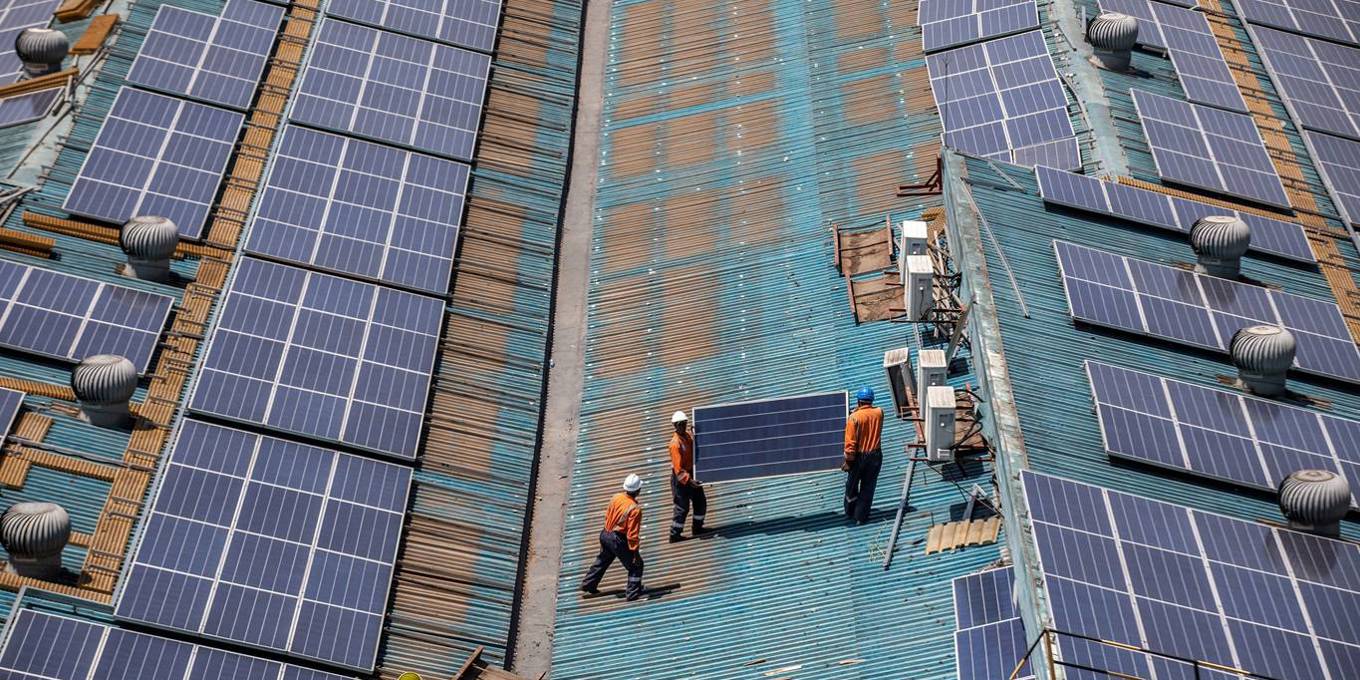
Unlocking Africa’s potential for green growth is an essential part of any long-term solution to the climate crisis. The international community must therefore take a coordinated and comprehensive approach to providing debt relief to these countries, so that they have the fiscal space to make the investments that the world needs.
GABORONE/NAIROBI – Many countries have experienced extreme weather in one form or another this year: the summer, marked by intense wildfires, was the hottest on record, while the return of El Niño has led to catastrophic flooding and other disasters. Such shocks underscore the urgent need for multilateral efforts to address climate change and achieve sustainable development.
- Escaping the New Gilded Age
 Theo Wargo/WireImage
Theo Wargo/WireImage - America’s Broken Constitution
 Jemal Countess/Getty Images for Court Accountability
Jemal Countess/Getty Images for Court Accountability - China’s Climate Balancing Act
 Getty Images
Getty Images
Subscriber Favorite
In the last few months of 2024, world leaders will gather for a series of summits – including the International Monetary Fund-World Bank Group Annual Meetings in Washington, DC, the G20 summit in Rio de Janeiro, and the United Nations Climate Change Conference (COP29) in Baku – where they could make progress on these fronts. These meetings are particularly important for African countries, which remain vulnerable to the effects of global warming amid a deepening sovereign-debt crisis.
Of the 20 countries that are most vulnerable to climate change, 17 are in Africa. In addition to adverse weather and rising temperatures, African economies have suffered a series of external shocks – including inflation spikes, interest-rate hikes in advanced economies, rising geopolitical tensions, and violent conflicts – in recent years. Partly as a result of these shocks, the continent’s public debt levels increased by a whopping 240% between 2008 and 2022.
The consequences are dire. Over half of African countries now spend more on interest payments than on health care and lack the fiscal space to invest in sustainable development. This cycle of debt and development distress makes these countries even more vulnerable to the effects of global warming, trapping them in a loop of economic instability and environmental degradation.
While increased liquidity may offer temporary relief to African economies by easing short-term fiscal pressures, it fails to address the deeper debt problem that is impeding green growth. To mobilize the financing needed for climate action and to achieve the UN Sustainable Development Goals by 2030, we estimate that at least 34 African countries will require significant debt relief.
Unfortunately, the G20’s Common Framework for Debt Treatments, designed to provide relief to countries in debt distress, has proven woefully inadequate. Its case-by-case approach is slow and insufficient, leaving many countries in a perpetual state of fiscal instability. Moreover, private creditors’ reluctance to participate in debt restructuring, coupled with the exclusion of multilateral development banks (MDBs), has resulted in uneven and often inadequate responses.
Secure your copy of PS Quarterly: The Climate Crucible 
Secure your copy of PS Quarterly: The Climate Crucible
The newest issue of our magazine, PS Quarterly: The Climate Crucible, is here. To gain digital access to all of the magazine’s content, and receive your print copy, subscribe to PS Premium now.
Subscribe Now
To embark on the path of sustainable development, African countries need large-scale debt relief. This would provide governments with the fiscal space to invest in resilient infrastructure, renewable energy, and other climate-related projects. Without such measures, Africa’s green-growth aspirations will be unfulfilled, and the continent will continue to suffer from unsustainable debt dynamics that escalate climate damage and worsen social outcomes.
Large-scale debt relief must rest on three pillars. First, bilateral creditors and MDBs must take a significant haircut to restore fiscal stability in debtor countries. Second, incentives and penalties are required to ensure private and commercial creditors’ full participation in debt restructuring. Third, credit enhancements and support for non-distressed countries must be provided to reduce capital costs and maintain liquidity. This holistic approach would enable African countries to scale up and sustain investment in climate resilience and sustainable development.
An essential part of these reforms is the inclusion of climate considerations in the IMF’s debt sustainability analyses. Currently, DSAs focus on a country’s ability to service its debt, while failing to consider its need to invest in the energy transition and the industries of the future. By incorporating climate risks and opportunities into DSAs, the international community can ensure that debt relief is aligned with broader sustainability goals.
The participation of all creditor classes, including private bondholders and MDBs, in debt restructuring is also critical. Using fair comparable-treatment rules to determine losses would ensure equitable burden-sharing.
Such a coordinated and comprehensive approach to debt relief would unlock Africa’s potential for green growth, an essential part of any long-term solution to the climate crisis. The continent has vast solar, wind, and hydro resources, and the world’s youngest and fastest-growing workforce. With the right investments, Africa could become a hub for renewable energy and clean industries, thereby advancing the continent’s development goals and the global fight against climate change.
Looking ahead to 2025, African leaders will have a unique opportunity to drive the reforms needed to address the debt-climate nexus. With South Africa presiding over the G20 (which now counts the African Union as a permanent member), and Uganda leading the G77, the continent’s governments will be in a position to push for significant debt relief and critical reforms to the global financial architecture.
The climate and debt crises in Africa are inextricably linked, and addressing one but not the other is a recipe for failure. The international community must act now to support Africa in building a sustainable, green future for all.











Comments